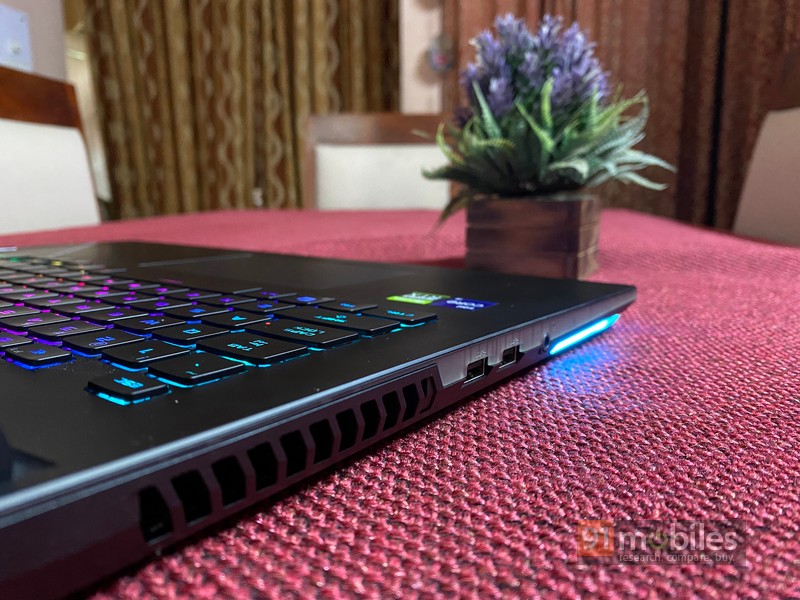
Maintaining an optimal temperature for your gaming laptop is crucial for unlocking its full potential and extending its lifespan. With their compact yet powerful designs, gaming laptops often face challenges in dissipating heat efficiently, especially during extended gaming sessions.
In this guide, we’ll take a look at some effective strategies and practical tips to help you effectively cool your gaming laptop. From optimising settings to investing in cooling accessories and managing airflow, we’ll cover everything you need to know to ensure your gaming laptop runs cool, performs at its peak, and remains reliable for years to come.
But, before that, let us take a look at some of the factors that contribute to a gaming laptop overheating-
Intensive gaming workloads: Running graphically demanding games or applications for extended periods can put a significant strain on the CPU and GPU, leading to increased heat generation.
Inadequate cooling system: Some gaming laptops may have insufficient cooling systems, such as small or inefficient fans, limited ventilation, or poorly designed heat dissipation mechanisms. This can result in inadequate heat dissipation and lead to overheating.
Dust and debris: One of the biggest reasons that contribute to overheating issues is the accumulation of dust and debris in the laptop’s air vents, fans, and heat sinks that obstruct airflow.
Ambient temperature: High ambient temperatures in the environment where the laptop is used (especially in a country like India) can make it more challenging for the cooling system to dissipate heat effectively, leading to overheating.
Overclocking: Overclocking the CPU or GPU to achieve higher performance can increase heat generation beyond the laptop’s cooling capacity. Without adequate cooling, overclocked components can quickly overheat and cause stability issues.
Blocked air vents: Placing the laptop on soft surfaces like beds or couches can block air vents and hinder airflow, leading to heat buildup. Similarly, using the laptop on surfaces that restrict ventilation can contribute to overheating.
Hardware ageing: As gaming laptops age, thermal paste and thermal pads that facilitate heat transfer between components and cooling systems may degrade or dry out. This can result in decreased thermal conductivity and contribute to overheating problems.
Software and driver issues: Occasionally, software bugs, driver conflicts, or inefficient software running in the background can cause the CPU or GPU to work harder than necessary, leading to increased heat generation and potential overheating.
Here are some ways that can help keep your gaming laptop cool
Table of Contents
Use a cooling pad

A cooling pad is an external accessory equipped with built-in fans that help improve airflow and dissipate heat from the bottom of your gaming laptop. Choose a cooling pad with adequate fan speed and size to match your laptop’s cooling needs. Look for features such as adjustable fan speed, USB-powered operation, and ergonomic design for comfortable use. Place your gaming laptop on the cooling pad while gaming to reduce temperatures and prevent heat buildup on surfaces like desks or laps.
Elevate the laptop
Elevating your gaming laptop slightly using a stand, cooling dock, or props can create a gap underneath the device, improving airflow and heat dissipation. Choose a stable and adjustable laptop stand or create a DIY solution using books or stands to ensure proper elevation without obstructing airflow or stability.Clean air vents and fans

Over time, dust, and debris can accumulate in the air vents, fans, and heat sinks of your laptop, hindering airflow and reducing cooling efficiency. Regularly clean these areas using compressed air, a soft brush, or specialised cleaning tools to remove dust and debris. Ensure your laptop is powered off and unplugged before cleaning to avoid damage.
Optimise power settings
Adjust your laptop’s power settings to balance performance and heat generation. Use power-saving modes for non-gaming tasks to reduce CPU and GPU workload and lower temperatures. During gaming sessions, switch to high-performance modes to maximise gaming performance but monitor temperatures to prevent overheating.Adjust graphics settings
You can tweak your laptop’s graphics settings to reduce heat generation by the internal components. For instance by lowering the display resolution to reduce GPU strain and heat generation while maintaining acceptable visual quality.

Similarly, you can reduce graphics quality settings such as texture quality, shadow quality, and lighting effects within your game settings or using the Nvidia or AMD Radeon software. While in-game, disable or minimise anti-aliasing and other graphical effects and prioritize performance by choosing settings that focus on frame rate and smooth gameplay over graphical fidelity, especially in demanding games. Additionally, try to make a balance between these settings with modern frame generation technologies like Nvidia’s DLSS (Deep Learning Super Sampling) and AMD’s FSR (FidelityFX Super Resolution).
Avoid overclocking
Overclocking your CPU or GPU can significantly increase heat generation and lead to overheating issues, especially in gaming laptops with limited cooling capacity. Avoid aggressive overclocking without adequate cooling solutions in place. If you must overclock, do so gradually and monitor temperatures closely to prevent thermal throttling.Apply thermal paste

Manage background processes
Close unnecessary background processes, applications, and browser tabs while gaming to reduce CPU and GPU workload. This can lower heat generation and improve overall system performance. Use task manager or system monitoring tools to identify and close resource-intensive processes that may contribute to heat buildup.Avoid direct sunlight
Keep your gaming laptop away from direct sunlight, heat sources, and warm environments to prevent additional heat buildup. Position your laptop in a cool, shaded area with adequate ventilation. Avoid using your laptop outdoors or near radiators, heaters, or other heat-emitting devices that can raise ambient temperatures.Upgrade cooling system

By implementing these cooling methods and practicing regular maintenance, you can effectively manage and reduce heat buildup in your gaming laptop, ensuring optimal performance, stability, and longevity of your hardware.











![[Exclusive] Motorola Razr 50 5G, Razr 50 Ultra 5G design, specifications revealed Thumbnail](https://www.91-cdn.com/hub/wp-content/uploads/2024/05/Motorola-Razr-50-series-renders-100x70.png)
